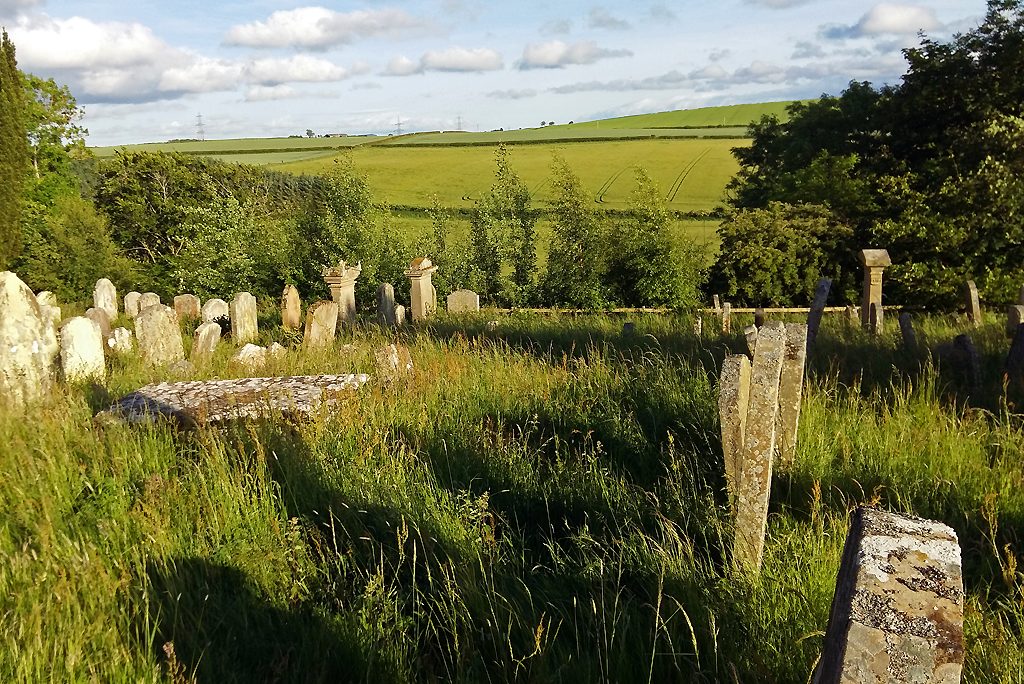In 2011, two members of Coldstream and District Local History Society began photographing headstones in the local Lennel Kirkyard. The images can now be viewed online, along with transcriptions of the messages on the stones.
During this exercise, we often spoke about the dilapidated Lennel Kirk. It seemed unsafe, and a bit of an eyesore. We began to wonder who owned the building, and whether we could help repair it.
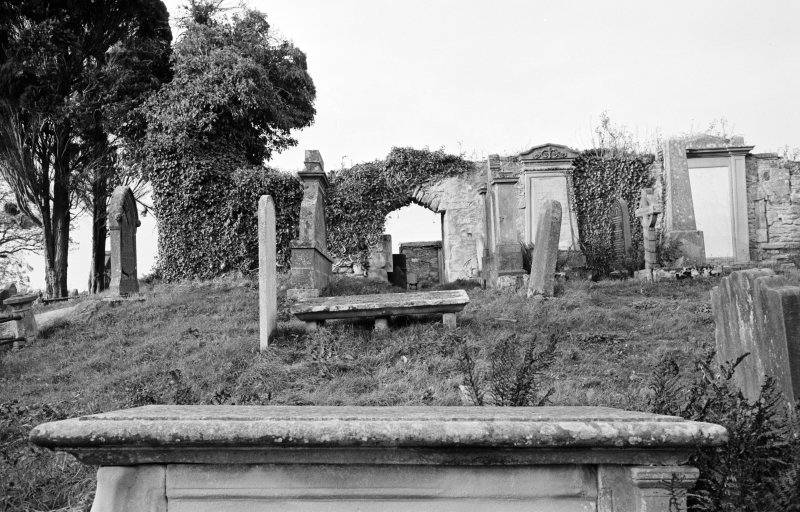
View of Lennel Church taken in 1961, part of the Scottish National Buildings Record
Care from the Community
In 2015 we held a public meeting to talk about the kirk’s future. Nobody seemed to own the building, so it was suggested a Community Interest Company (or CIC) be formed. This company would be able to claim ownership, apply for external grant funding, and hopefully manage a conservation project.
At the time we thought we had taken a risk in creating a CIC, but we now know this was a good move. It allowed us to conserve a B-listed building, and to make it safe for visitors.
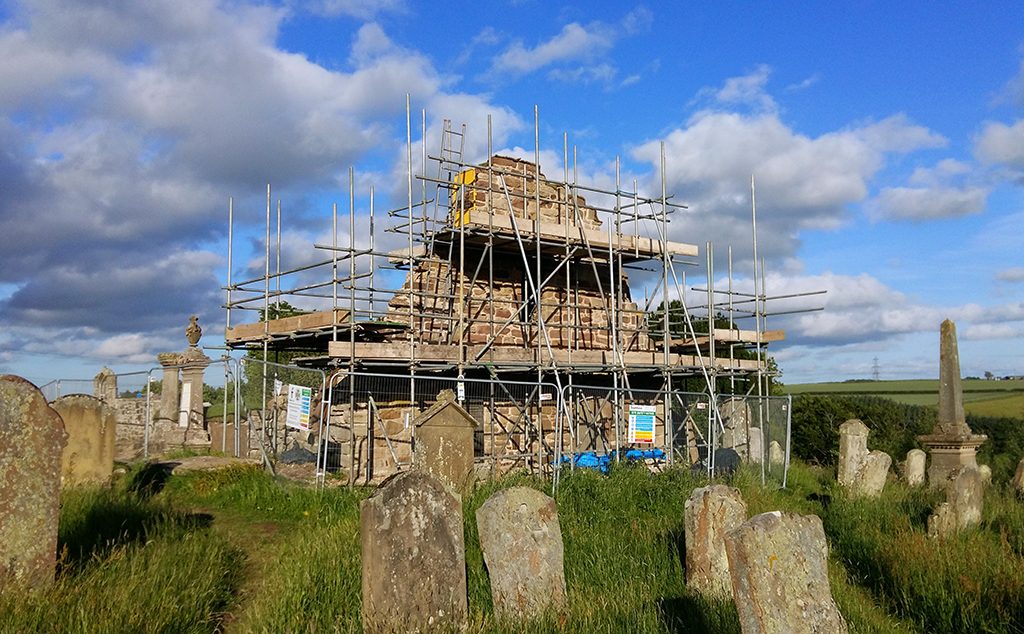
Forming a CIC allowed the team to claim ownership and start work to repair the medieval kirk
How to repair a medieval kirk
We made a ‘provisional claimant’ application to Registers of Scotland (RoS), and began applying for support to rescue the kirk.
We received grant funding from:
- Heritage Lottery Fund: Our Heritage
- Historic Environment Scotland (HES)
- Fallago Environmental Fund
- Scottish Landfill Communities Fund
- The Headley Trust
We also had donations from the Douglas and Angus and Lennel Estates, Flodden 1513 Club and Coldstream and District Local History Society.
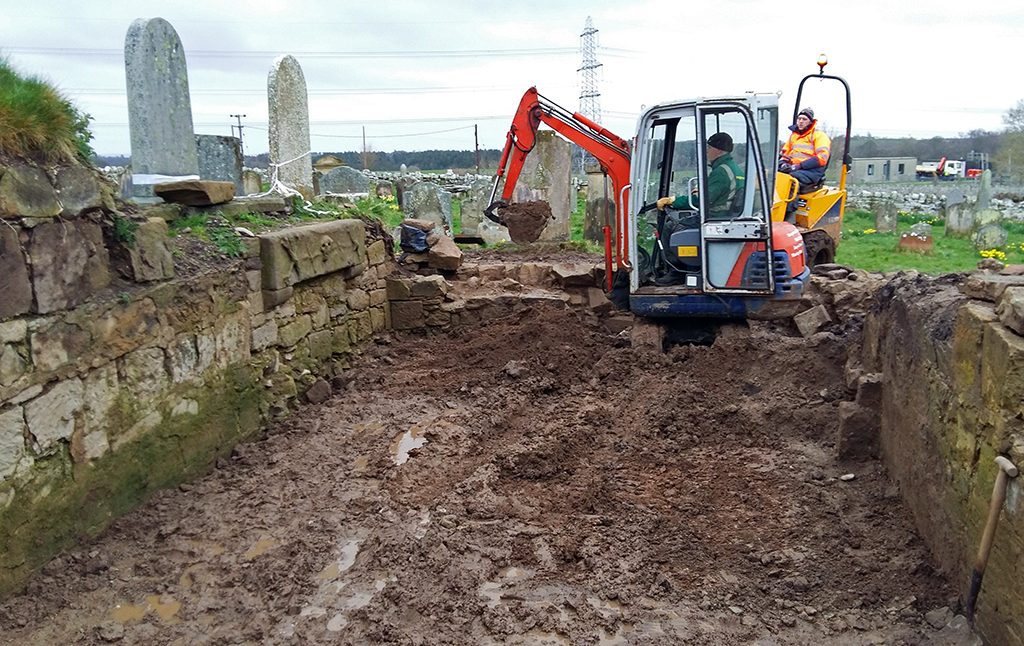
With funding secured, the group could get to work!
£136,957 was raised in total. This would cover professional fees, archaeological investigation, stonemasonry and resources to interpret the information gathered and educate people about the history of the kirk in the future.
We estimate the value of input from volunteers who helped with the project was £8,300.
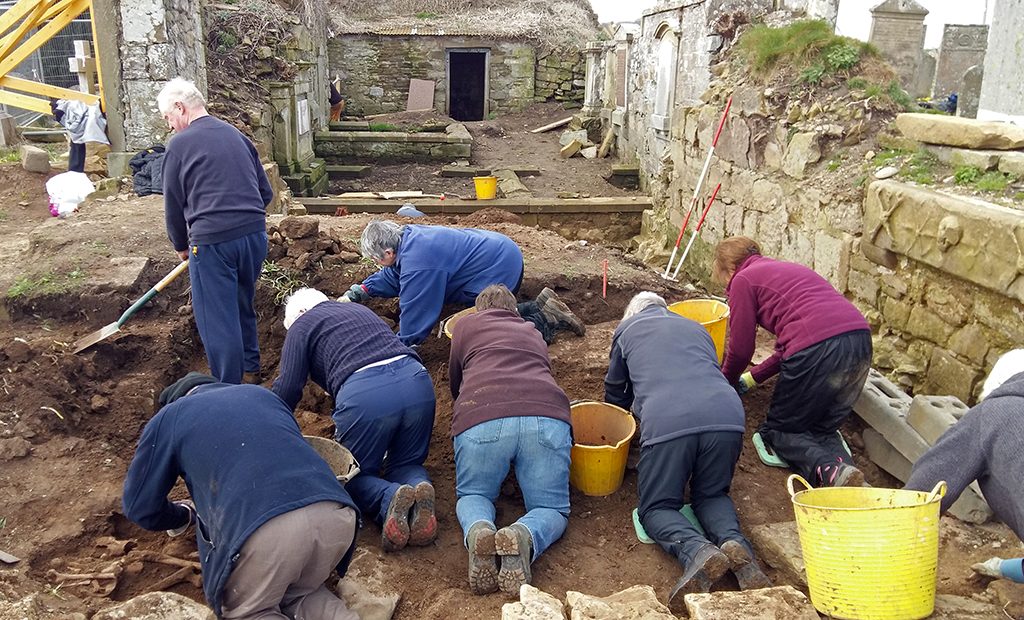
The project leaders were overwhelmed by the level of support from local volunteers
Our highlights were:
1. The archaeology
Archaeological research at Lennel Kirk:
- Confirmed the foundations of the church are Anglo-Saxon
- Identified Norman period stonework and a very unusual Reformation-period headstone
- Told us the kirk was built in around 1126
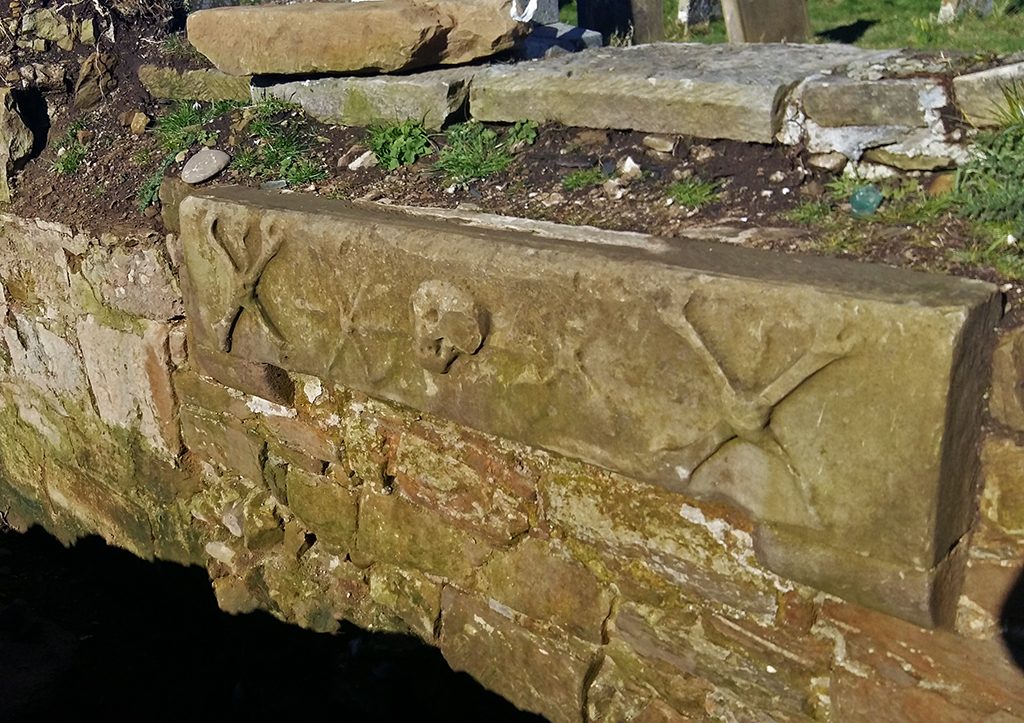
The archaeological work helped identify this unusual headstone as being of post-Reformation date
2. The Community involvement
The level of archaeology volunteering exceeded our ‘budget’ by around 75%.
Alongside helpers from the interested local community, we learned a lot about the medieval religious scene, the Borders Abbey trail, archaeological surveys and processes, and the horrible era of body-snatching.
Uncovering all this information adds value to the conservation work, because people can now visit the site safely and learn the secrets of Lennel Kirk when they do.
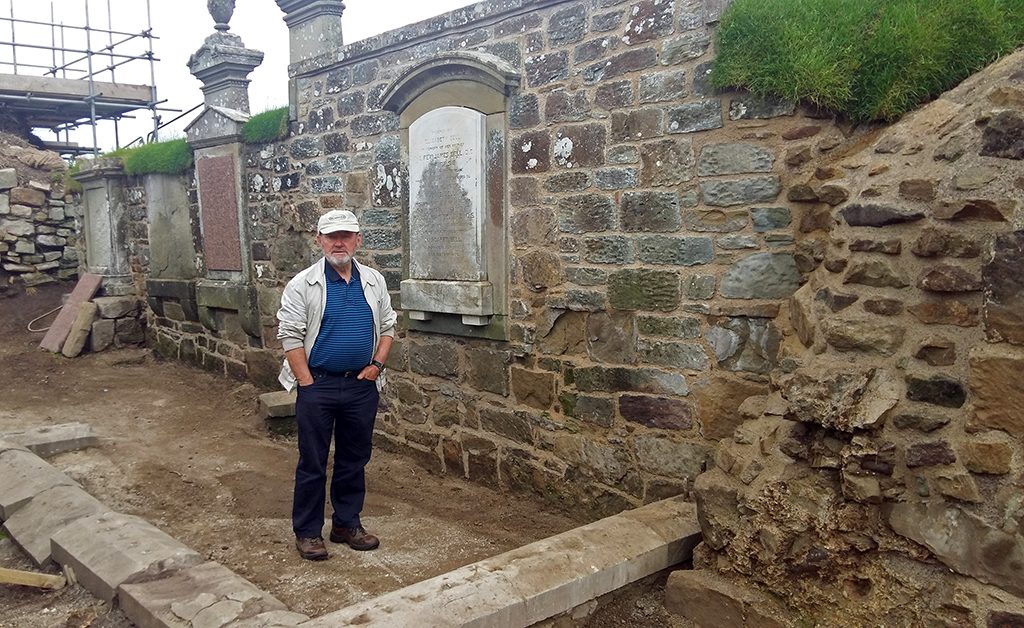
Project team member John stands in front of the north wall after conservation work is completed
3. The Project Management Skills
The experience showed us how to manage a complex project, including how to get the best from community volunteers. We’d encourage anyone to do this, and have a few top tips to get you started:
- Ensure your project budget covers every cost
- Have a 20% contingency
- Check you have all the consents and permissions you need
- Strictly follow external grant funder conditions
- Get the approval and support of your local community
- Control your budget
- Get experienced professionals on board
- Make sure your project team has relevant skills, spare time and… patience.
The project is almost finished and we are a happy bunch!
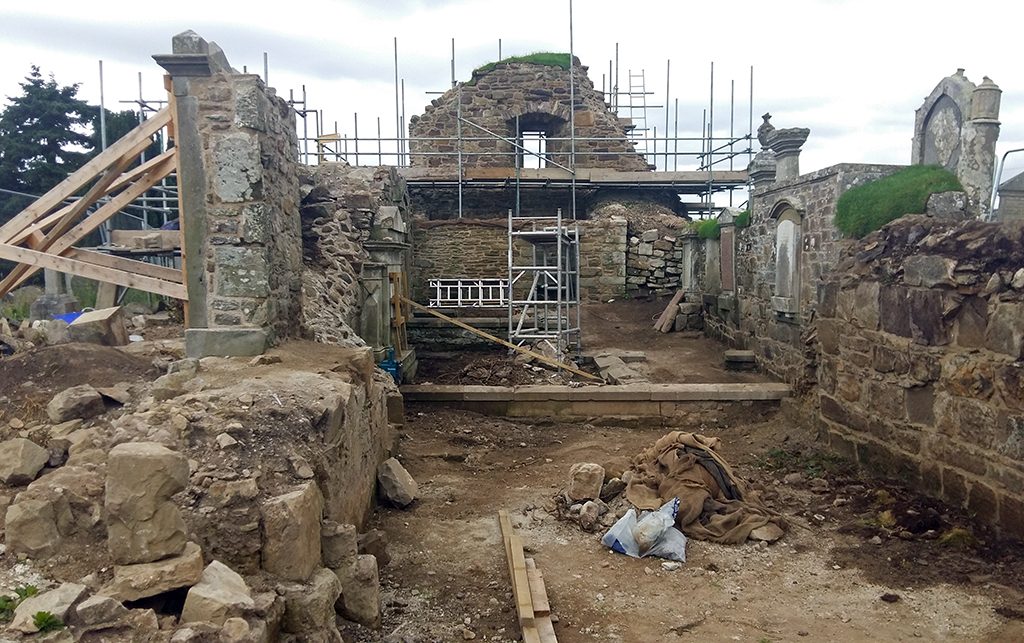
The inner kirk a few weeks before work was completed
Thanks to Gerald Tait, Trevor Swan and Will Murray, Directors of Coldstream’s Heritage Ltd, for sharing their story.
Do you have a story about celebrating your local history or heritage? Let us know in the comments, on Twitter with #HeritageDay17, or find out how to get involved with our toolkit.
Find out how to apply for HES grant funding on our website

